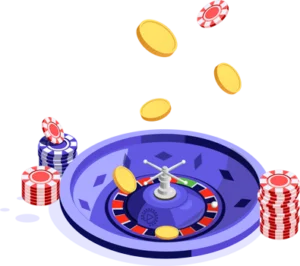Playing Neighboring Numbers at Roulette

Roulette, often dubbed the “King of Casino Games,” holds a special place in the hearts of South African players, whether they're enjoying the thrill at a land-based casino or spinning the wheel from the comfort of their homes via live roulette. While many players rely on lucky numbers or popular betting systems like the Martingale or Fibonacci sequence, seasoned enthusiasts often employ a more sophisticated approach: betting on specific sectors of the roulette wheel.
This strategy involves understanding and utilising “neighboring numbers” – a concept that allows players to cover a specific arc of the wheel, increasing their chances of hitting a number within that chosen segment. If you're looking to elevate your roulette game and explore more advanced betting techniques, understanding neighboring numbers is a fantastic place to start.
Here on Casinoble SA, we'll delve into what neighboring numbers are, how they work, and how you can incorporate them into your online and live roulette play. For more insights into casino games, bonuses, and payment methods, keep exploring our guides!
What are Neighboring Numbers in Roulette?
In roulette, neighboring numbers refer to a group of numbers that are physically adjacent to each other on the roulette wheel, not necessarily on the betting layout. This distinction is crucial. While the betting table arranges numbers numerically or by colour, the wheel itself has a specific, non-sequential order designed to distribute high and low, odd and even numbers as evenly as possible.
When you place a “neighbors” bet, you are essentially selecting a central number and then betting on a specified number of numbers on either side of it on the wheel. For instance, if you bet on “0 and its 2 neighbours,” you're covering the number 0, plus two numbers to its left and two numbers to its right on the actual roulette wheel. This creates a small, contiguous sector of numbers that you hope the ball will land in.
This strategy moves beyond simply picking individual numbers; it's about predicting which *area* of the wheel the ball will settle in. It's a popular choice among players who observe the wheel's spin and want to cover a broader, yet still focused, range of outcomes.
Understanding Roulette Wheel Sectors
To truly grasp neighboring numbers, especially in European roulette (which features 37 numbers, 0-36, and is most common in online casinos accessible to South African players), it's helpful to understand the traditional division of the wheel into major sectors. These sectors are often represented on a “racetrack” betting layout, which mirrors the order of numbers on the wheel:
- Voisins du Zéro (Neighbors of Zero): This is the largest sector, covering the zero and the numbers immediately surrounding it on both sides of the wheel.
- Tiers du Cylindre (Third of the Wheel): This sector covers roughly one-third of the wheel opposite the zero.
- Orphelins (Orphans): These are the numbers that are not included in the Voisins du Zéro or Tiers du Cylindre sectors, forming two smaller groups on the wheel.
While these are predefined sectors, the “neighbors” bet allows for more customisation. You can choose any number as your central point and then specify how many neighbours (e.g., 1, 2, 3, or 4) on either side you wish to include. This flexibility makes it a powerful tool for players looking to target specific areas of the wheel.
The “Neighbors of Zero” (Voisins du Zéro) Bet
The “Neighbors of Zero” bet is one of the most well-known and frequently used sector bets, and it's a prime example of betting on neighboring numbers. This bet covers a significant portion of the European roulette wheel, specifically the 17 numbers closest to the single zero pocket.
The numbers included in the Voisins du Zéro are: 22, 18, 29, 7, 28, 12, 35, 3, 26, 0, 32, 15, 19, 4, 21, 2, 25. These are the numbers that span from 22 to 25 on the roulette wheel, passing through the 0.
To place this bet, a total of 9 chips are typically used, distributed across various splits, corners, and a trio bet to cover all 17 numbers:
- Two chips on the 0/2/3 trio.
- One chip on the 4/7 split.
- One chip on the 12/15 split.
- One chip on the 18/21 split.
- One chip on the 19/22 split.
- Two chips on the 25/26/28/29 corner.
- One chip on the 32/35 split.
This comprehensive bet is also known by names such as the ‘Grand Series' or ‘Zero Sector'. There's also a variant, sometimes called ‘Zero and its Neighbours', which might involve an additional chip placed directly on the 0 for a straight-up bet, aiming for a higher payout if the ball lands on zero.
While American roulette tables sometimes feature a racetrack layout for these sector bets, they are most commonly associated with European and French roulette due to the single zero, which simplifies the wheel's division.
How to Place Neighboring Bets Online
For South African players enjoying online roulette, placing neighboring bets is straightforward. Most reputable online casinos and live dealer platforms offer a “racetrack” betting area alongside the standard numerical layout. This racetrack visually represents the numbers in their order on the actual roulette wheel.
To place a neighboring bet:
- Select your chip value: Choose the denomination of chips you wish to bet with.
- Locate the Racetrack: On the betting interface, look for a smaller, oval-shaped layout, which is the racetrack.
- Choose your central number: Click on the number on the racetrack that you want as the centre of your neighboring bet.
- Specify the number of neighbours: Often, there will be options like “N+1,” “N+2,” “N+3,” or “N+4” (where N is your chosen number). Select how many numbers on either side of your central number you wish to include. The system will automatically place the correct number of chips on the corresponding numbers on the main betting layout.
- Confirm your bet: Once satisfied, confirm your bet and watch the wheel spin!
This intuitive interface makes it easy for players to engage with these more complex bets without needing to memorise every single number and chip placement for each sector.
Why Consider Neighboring Number Bets?
Incorporating neighboring number bets into your roulette strategy can offer several advantages:
- Increased Coverage: By betting on a sector, you cover multiple numbers with a single action, increasing your chances of hitting a winning number compared to betting on individual straight-up numbers.
- Strategic Play: It adds a layer of strategy beyond simple outside bets (red/black, odd/even) or random number selection. It allows you to target specific areas of the wheel based on observation or preference.
- Excitement: For many, the thrill of covering a “hot” section of the wheel or trying to predict where the ball will land adds to the excitement of the game.
- Risk Management: While covering more numbers, these bets are often placed with a relatively small number of chips spread across various outcomes, which can be a way to manage risk while still aiming for decent payouts.
While no roulette strategy guarantees a win, understanding and utilising neighboring numbers can certainly make your gameplay more engaging and potentially more rewarding. Remember to always gamble responsibly and within your means. If you or someone you know needs help with problem gambling, please contact the National Responsible Gambling Programme (NRGP) on 0800 006 008.
Most Recent News
Get the latest information








